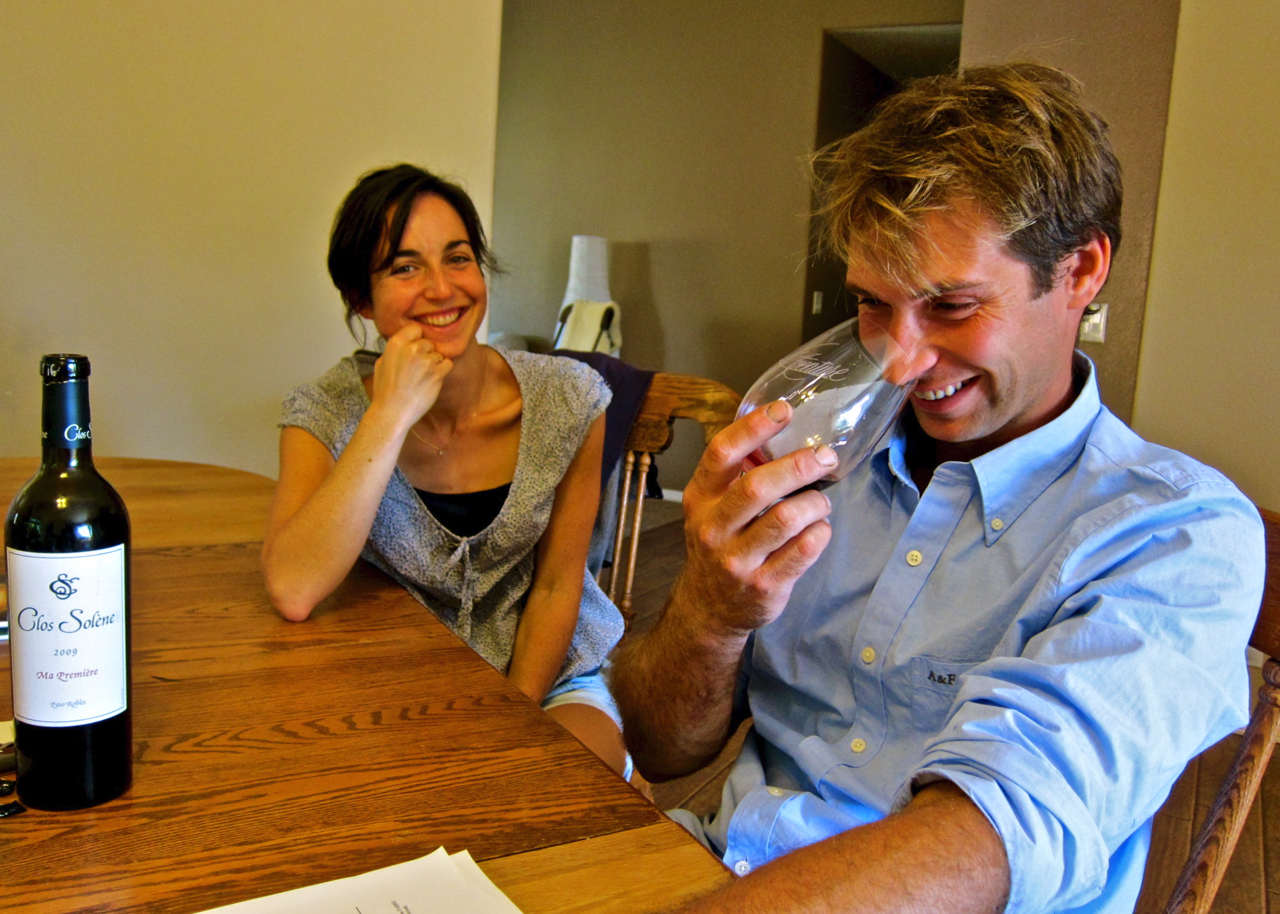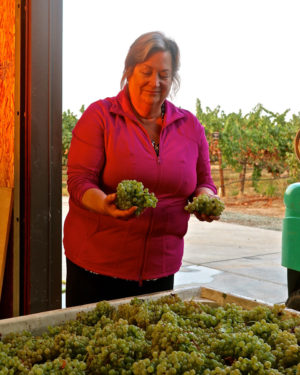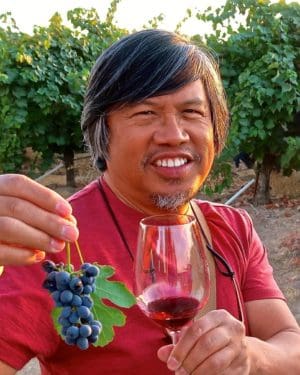Some of the best wines of the Old and New World are produced in hot climate regions.
—Randy Caparoso
I once attended a Hospice du Rhône in Paso Robles—which used to be a yearly (but is now an occasional) celebration of wines for lovers of grapes grown in Mediterranean regions—and I was suddenly struck by a recurring theme voiced by guest vintners who were attending from the Rhône Valley, Australia, Priorat: They all grow grapes, they seemed to gleefully say, in “hot climates.”
In the U.S., on the other hand, “hot climate” implies wines that are “rough,” “lowdown,” “crude,” or “uncouth.” Hot climate wines are to be avoided, banished from our crystal decanters for lack of grace, restraint, elegance or (horrors) “balance.”
As if any wine intended to be considered seriously must be made from grapes grown in cooler climate regions, like the Pinot noir of Burgundy in France, or maybe Riesling cultivated along Germany’s icy rivers. But the drinking, thinking man (and woman) of today does not live by Pinot noir alone. Certainly, not by Riesling.

Randall Grahm, the original proponent of the suitability of “Rhône” grapes to California’s warm Mediterranean-like environment, has been quoted to say that the problem with American Syrahs is not the fact that not enough people appreciate them, but that they’re grown (mostly) in the wrong places.
According to Grahm, Syrah is another cool climate grape — which, evidently, the French learned long ago. Syrah grows well in the France’s Northern Rhône, where the climate tends to be milder than almost anywhere—including California. The result: Northern Rhône Syrahs attain beautiful violet, licorice, mineral and sweet spice characteristics that can be elusive in Syrahs grown in warmer regions around the world.
Herein lies the contradiction: When you attend events like Hospice du Rhône, where there is plenty of opportunity to compare American grown Syrahs right alongside those of France or Australia, you cannot help but find that the most exciting wines in terms of intensity, balance and complexity are those that are grown in places that are, in fact, gleefully “hot.” And, dare I say, French Syrahs often come across as boring in comparison.
Regions such as Walla Walla Valley, Barossa Valley, Paso Robles or Lodi may be considerably warmer than the Northern Rhône, but what are we supposed to do when we taste perfectly delicious wines from all of these places? Pretend they don’t exist, or that our opinions don’t count?
Winemaker Guillaume Fabre, who was born and schooled in France, now lives and works in Paso Robles, growing Syrah and producing varietal and Syrah-based blends every year that absolute exude “Syrah-ness”—high intensity flavor; alcohol levels topping 15%. Yet people stand in line to buy his Clos Solène label at about $100 per bottle.

I asked him, why in the world he is making such out-of-control, un-French-like wine. His response: “I did not come all the way from France to make French style wines… I am making the best wines I can from here!”
In California’s Lodi AVA, a vineyard owner named Sue Tipton once fell in love with a rare white wine from the Southern Rhône Valley, called Châteauneuf-du-Pape Blanc. She cleaned out all the inventory from local wine stores; and after there were no more bottles to satisfy her craving, she endeavored to plant the same grapes that go into Châteauneuf-du-Pape Blanc whites around her home in Lodi (originally planted to Zinfandel), to begin making her own versions of this wine.
Vineyards in Châteauneuf-du-Pape, mind you, consist of giant piles of galets roulés. Tipton’s vineyard is full of sandy loam.
But, as in Châteauneuf-du-Pape, Lodi’s climate is “gleefully hot.” It’s officially classified as “Mediterranean,” meaning it has warm summers and very little fog or cloud coverage. Lodi is to wine grapes what Hawaii is to sun-worshippers.

And so, Sue Tipton was successful in her endeavor. Even though Lodi is not Châteauneuf-du-Pape.
Neither is it Rías Baixas, the Spanish wine region where the principle grape is Albariño. In Lodi, there are now more local wineries producing white wines made from Albariño than from the more popular Chardonnay or Sauvignon Blanc. Lodi-grown Albariño has become as good as any made in the world, and for all the right sensory reasons—the light and airy crispness, the deftly balanced dryness, the floral, mineral and citrus perfumes.
This brings up another myth widely promulgated in discussions about “hot” vs. “cold” climate winegrowing—that warmer wine regions produce wines that are low in acidity. I’m convinced that people who are most likely to repeat this erroneous assumption are those who have never sat at an outdoor table in a place like Lodi or Paso Robles on a summer night, where during certain times of the year, you can almost freeze to death! Nor have they’ve been to Provence, Corsica or Santorini, the Southern Rhône Valley or even Salinas Valley, where vicious winds shut down the vines just as effectively as dipping night-time temperatures.
Wind, diurnal temperatures, restrictive soils, aspects (i.e., hillside exposures), altitudes, skin-to-juice ratios—these are among the myriad reasons why many of the hottest winegrowing regions of the world produce grapes with plenty of natural acidity. In fact, one of the primary reasons why many of the wines from hot climate regions possess the fullest body (i.e., highest alcohol by volume) is because grape pH often remains so stubbornly low, vintners are forced to pick at higher sugars in order for grape acidities to come into balance. It’s why the typical acidity of Hunter Valley Sémillon or Clare Valley Riesling is best described as “rapier” and why these wines end up aging so well for so long in bottle. It’s also why Sue Tipton’s blends of Lodi-grown Grenache blanc, Roussanne or Clairette blanche are actually crisper and more minerally than anything found in Châteauneuf-du-Pape.
Is this magic or voodoo?
No, just fact.
The fact is it doesn’t pay to a dismiss any wine region just because its climate is “hot,” or its wines inexpensive, the vines promiscuous. Or because highbrows are slow to catch on (conjectural dogma usually dies slowest).
_______________________________________________________________________
Expert Editorial

Randy Caparoso is a full-time wine journalist/photographer living in Lodi, California. In a prior incarnation, he was a multi-award winning restaurateur, starting as a sommelier in Honolulu (1978 through 1988), and then as Founding Partner/VP/Corporate Wine Director of the James Beard Award winning Roy’s family of restaurants (1988-2001), opening 28 locations from Hawaii to New York. While with Roy’s, he was named Santé’s first Wine & Spirits Professional of the Year (1998) and Restaurant Wine’s Wine Marketer of the Year (1992 and 1998). Between 2001 and 2006, he operated his own Caparoso Wines label as a wine producer. For over 20 years, he also bylined a biweekly wine column for his hometown newspaper, The Honolulu Advertiser (1981-2002). He currently puts bread (and wine) on the table as Editor-at-Large and the Bottom Line columnist for The SOMM Journal (founded in 2007 as Sommelier Journal), and freelance blogger and social media director for Lodi Winegrape Commission (lodiwine.com). You may contact him at randycaparoso@earthlink.net.




